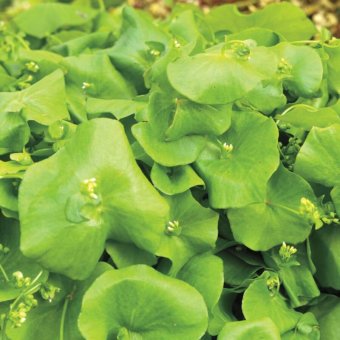In a relatively short growing season, we need to grow most food crops in a fairly intense way. We need to select crops that mature quickly. Some crops, like mescluns and salad greens grow so fast that we can take several harvests in a single season. Other plants, like pumpkins, use most of the growing season to produce masses of foliage, and then bloom and form fruits as autumn approaches. Whatever the case, the plants we cultivate in our food gardens take nutrients from the soil and energy of the sun in order to perform.
Many crops require full sun (6 to 8 hours of direct sunshine a day) in order to grow at the rate needed to mature before the season ends. In particular, crops that we grow for their fruiting stage need this much sun. This includes everything from tomatoes to beans, and peppers to corn. If these plants are grown in less than full sun, it’s unlikely they will produce a good crop.
However, many of our tastiest food crops are grown for their foliage — it’s the leaves we eat, and usually we take steps so these plants are harvested before they mature. Think of lettuce and mustard and leafy herbs. Growers who are limited by a north-facing balcony or a neighbouring building that blocks mid-day sun, have lots of options for growing food in part shade. Here’s just a taste:

Amaranth – Grow it trays or containers for flavourful baby greens. Harvest just three weeks after planting.

Arugula – The tasty baby greens are mild and tender, but get spicier as the plants mature. Most are ready to harvest at only 30-40 days.

Catnip – This leafy member of the mint family will grow and even flower in partial shade, if it can be protected from cats.

Chervil – This subtle and fragrant herb actually prefers shady spots to full sun, and will perform better when it receives little direct sunlight.

Chives – All shade-bound growers should at least cultivate a pot of chives because of their ease and reliability. This is an entry-level herb that belongs in every herb garden.

Cilantro – A plant that tends to bolt when it is under heat stress, but that grows perfectly well in partial shade. Choose deeper containers to allow for its long tap root.

Claytonia – Miner’s Lettuce is still unknown to many North American gardeners, but it’s a superb source of greens that will thrive in partial shade.

Corn Salad – Another little-known green that prefers cool growing conditions and does not mind low light settings.

Cress – There are several varieties to choose from, but they’re all fast-growing in any situation.

Dill – Dill will grow and even bloom out of direct sun. Even on north-facing balconies it will produce fine, fragrant foliage.

Kale – Try growing kale for baby salad greens. For mature plants, full sun is a better choice.

Lettuce – With scores of varieties to choose from, lettuce is an obvious choice for partial shade. In high summer, shade may actually prevent some varieties from bolting.

Mescluns – These seed mixes are intended for harvesting as baby greens, so they will all work in partial shade. This is another category where the grower is spoiled for choice.

Mint – Grow this familiar and useful herb in a pot to contain its wandering roots. Mint does very well in partial shade.

Mustard Greens – Another category that is incredibly diverse, with a wide range of colours, leaf shapes, flavours, and degrees of hotness. This category includes delicious, fast-growing crops like Mizuna and Komatsuna.

New Zealand Spinach – This unusual but tasty plant is usually grown because it thrives in the hot weather that usually makes regular spinach bolt and go to seed. But it’s perfectly happy growing in partial shade, too.

Pac Choi – This essential vegetable from China comes in many forms, from petite to massive and with varying intensities in flavour. All of them will produce in partial shade.

Parsley – Both curled and flat-leaf parsleys seem to shrug off a lack of direct sun, producing lush foliage for regular picking. Provide a deeper container, as parsley produces a long tap root.

Peas – This may be the exception to the rule, for the pea pod is very much a fruit because it contains seeds. Peas may not be as productive in part shade as they are in full sun, but they will produce at least some pods. Pea shoots are just immature pea plants, and they’re easy to grow in shady places.

Spinach – Baby leaf to full sized bunches of spinach can be produced in partial shade. It might even perform longer into the summer, while spinach planted in full sun is bolting.

Swiss Chard – The vegetable that keeps on giving… Chard is tasty at any stage, from micro-green to full size leaves. It may grow a bit slower in partial shade, but it will be packed with flavour and nutrients.






















